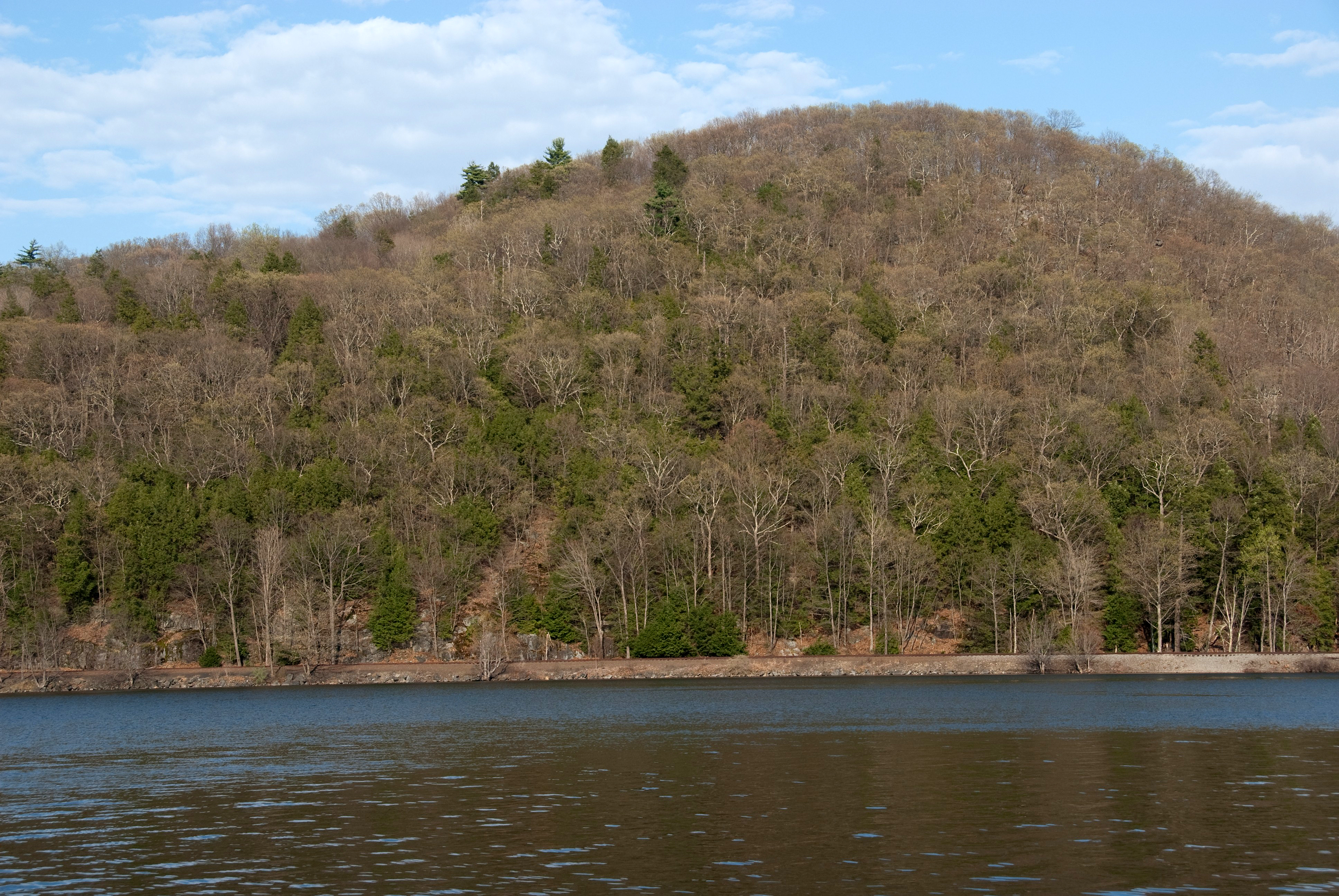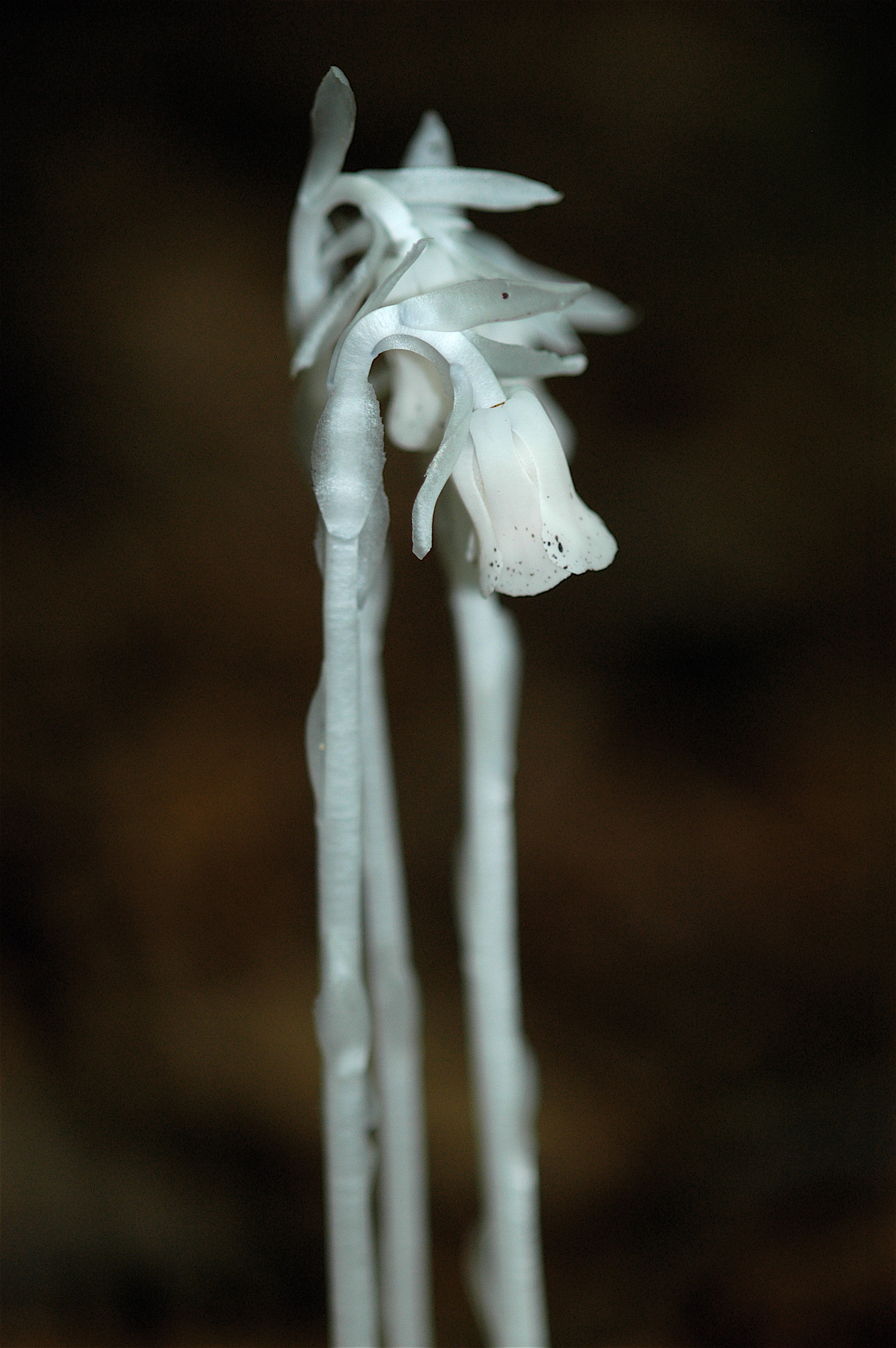|
Habitats
Terrestrial System. Forested
Uplands Subsystem-- Hemlock-northern hardwood forest community
|

|
|
|
Hemlock-northern hardwood
forest community, photo by Michael H. Nee
|
|
Physical Setting: This community occurs on the two hills
east of the Ice Pond. The forest on the northern hill is found on
the south and west slopes from the edge of the railroad nearly to
the summit (135–220). It covers approximately 100,000
square meters (about 25 acres), centered at 41.454ºN,
73.609ºW and 180 meters above sea level. On the southern
hill the forest covers all but the summit and a portion of the
west face, occupying approximately 200,000 square meters (about
49 acres) and centered at 41.447ºN, 73.611ºW and 190
meters above sea level.
|
 |
|
Indian pipe (Monotropa
uniflora), photo by Gregory A. Russo
|
Substrate and
Hydrology: Both sites occur on hillsides with thin, rocky
mineral soil. Numerous seeps provide year-round moisture, but the
soil dries out quickly.
Biota: The
canopy is dominated by eastern hemlock (Tsuga
canadensis) with red oak (Quercus
rubra), beech (Fagus
grandifolia), yellow birch (Betua
alleghaniensis) and black oak
(Quercus velutina)
as co-dominants. The dense canopy above makes the forest quite
dark and the thick layer of oak leaves and hemlock needles
on the ground decompose slowly, creating a very dry and sterile
surface substrate. Consequently, the shrub and herb layers are
sparse or absent entirely. The hemlocks here are infested with
the wooly adelgid (Adelges tsugae),
but the older trees are still vigorous and regeneration is good.
Cultural:
The
stone walls in the area go around (but not through) what is now
hemlock forests, suggesting that these areas may have been
hemlock forest for a long time and perhaps were not cultivated,
although they were undoubtedly logged.
|